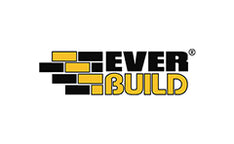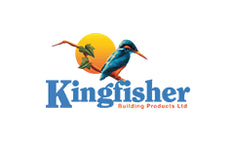Quick Navigation
Common UK Gate Types
Garden / Pedestrian Gate: Closeboard (featheredge) or palisade/picket, usually 0.9–1.2 m wide. Hung on timber or masonry posts.
Five-Bar Field Gate: Agricultural “five-bar” with diagonal bracing. Sizes commonly 3–12 ft (approx. 0.9–3.6 m). Hung on larger strainer posts.
Driveway Pair: Two leaves meeting centrally; often needs throw-over loop and drop bolts.
Metal Garden/Drive Gate: Welded steel with strap hinges or adjustable eye bolts.
Composite/Aluminium Gate: Low-maintenance infill panels with proprietary hinge/lock sets.
Anatomy of a Timber Garden Gate
Names vary slightly by joinery style, but the core parts are:
- Stiles: The vertical outer members (hinge stile and closing/slamming stile).
- Rails: Top rail, middle/lock rail, and bottom rail bind the gate together.
- Bracing: Diagonal brace (usually from bottom hinge side up to the closing stile) resists sagging.
- Boards/Pales: Vertical cladding (pickets or featheredge for closeboard).
- Capping: Weathering strip on top of closeboard to shed water.
- Heels/Toes: Bottom corners of the leaf; the “toe” (closing side) is most prone to sag.

Anatomy of a Five-Bar Field Gate
- Top Rail & Bottom Rail: Upper and lower horizontal members.
- Intermediate Rails: The remaining bars between top and bottom (often three, hence “five-bar”).
- Diagonal/Diamond Bracing: Braces that triangulate the frame. Traditional patterns form diamonds.
- Hanging Stile: Vertical member with ironmongery; mates to the hanging post.
- Slamming Stile: Closing side that meets the slam post or catch.

Posts, Foundations & Caps
Hanging Post: The post that carries the hinges. For garden gates, 100×100 mm or 125×125 mm treated softwood is common; field gates use larger strainers (e.g. 150–200 mm round/ square).
Slam/Closing Post: Receives the latch/keep and drop bolts. For pairs, each leaf has a post (or the pair closes together with a centre stop).
Hooks on Plate / Hook-to-Drive: The hinge pin fixed to the post—either on a bolted/screwed plate, or driven through a pre-drilled timber post.
Foundations: Typical burial depth is ~⅓ of post length or 600 mm minimum for pedestrian gates (soil dependent). Use well-drained concrete and avoid creating a “bucket” that traps water around the post.
Post Caps & Finials: Shed water and protect end grain; also decorative.

Hinges & Hanging Gear
The hinge set you choose affects strength, adjustment and ground clearance.
- Tee Hinges (T-hinges): A plate (on the stile) and a long strap (on the leaf). Great for light to medium garden gates; choose heavy duty for wide/heavy leaves.
-
Hook & Band Hinges: Classic for heavier timber and field gates. The band straps around the gate; the hook/gudgeon sits on the post.
- Straight Band vs Cranked Band: Cranked offsets the leaf relative to the post—useful to centre the leaf in the opening or clear caps/cladding.
- Adjustable Bands: Include a threaded eye so you can tweak alignment after fitting.
- Top Band & Bottom Band: Often supplied as a set with matching hooks.
- Hooks on Plate (surface-fix) vs Hook-to-Drive (driven through a bored post and nutted off behind).
- Reversible Hinges: Double-sided straps sandwich the gate edge; very robust on heavy closeboard leaves.
- Strap/Eye Bolt Hinges: On metal gates, a welded strap engages an adjustable eye bolt riding on a hinge pin.
- Rising Hinges: Cam-shaped knuckles lift the leaf as it opens to clear sloping ground.
- Gate Wheels/Castors: Support long or heavy leaves at the closing end; use along flat, hardstanding only.
Key hinge terms: Gudgeon (the pin/hook), strap/band (the long hinge plate), eye (round bearing that drops on the pin), pin (male part on the post), knuckle (barrel of a Tee hinge).

Latches, Closers & Keeps
- Suffolk Latch: Traditional thumb-latch; lift the thumb piece to raise a latch bar.
- Norfolk Latch: Similar aesthetic with a slightly different backplate/operation.
- Ring Latch: Rings each side operate a spindle to lift a catch—handy for garden gates.
- Auto Gate Latch (“Gravity” Latch): Self-latching as the gate shuts; usually padlockable.
- Self-Closing Springs: Return spring fitted between stile and post; useful where the gate must shut automatically (e.g. pets, pools).
- Keeps, Strikers & Slam Plates: The receiver the latch engages; protects the post from wear.

Bolts, Locks & Security
- Brenton Bolt / Barrel Bolt: Sliding bolt on a backplate; Brenton has a loop for padlocking.
- Padbolt: A heavier, padlock-ready slide bolt—common on sheds and garden gates.
- Throw-Over Loop: For double leaves; a hinged loop from one leaf drops over a staple on the other.
- Drop Bolt / Cane Bolt: A vertical bolt that drops into a ground socket to hold a leaf parked.
- Long-Throw Lock: Cylinder lock that throws a long bolt into a keep; ideal for solid closeboard gates with minimal hardware on the outside.
- Rim Lock / Nightlatch / Mortice Sashlock: Door-style locks adapted for gates where a fully keyed solution is required.
- Hasp & Staple: Simple padlockable closure; staple can be shielded for attack resistance.

Stops, Alignment & Anti-Sag
- Gate Stop / Centre Stop: A block or metal stop to set the closed position and protect hinges from over-closing.
- Anti-Sag Bar / Turnbuckle Brace: A retro-fit cable/rod brace with a turnbuckle to lift a dropping toe.
- Packing/Shims: Used behind hinge plates to fine-tune alignment on out-of-plumb posts.
- Anti-Lift Brackets: Prevent the leaf being lifted off its pins (useful on public frontages).
Materials, Finishes & Maintenance
Timber: Pressure-treated softwood is common and economical; hardwoods (oak, iroko) are durable and stable. Seal all end grain; use a breathable exterior finish or paint system.
Ironmongery Finishes: Hot-dip galvanised for longevity; black powder-coated for a traditional look; stainless hardware (screws/bolts) recommended in coastal or corrosive settings.
Maintenance: Check hinge pins and fixings annually; oil moving parts; touch-up coatings. Re-tighten adjustable eyes as timber seasons.
Measuring, Clearances & Handing
- Handing: Stand outside the property or field; if hinges are on your left, it’s left-hand hung; on your right, it’s right-hand hung.
- Clearances: Aim for 5–15 mm side gaps depending on hinge type and material movement; allow 20–50 mm ground clearance or more over gravel.
- Sloping Ground: Consider rising hinges or hang the gate to open uphill; increase toe clearance and use a drop bolt to secure open.
- Post-to-Post vs Gate Size: When ordering, confirm whether dimensions are leaf size or post-to-post daylight.
Gate Sizing Tables (UK)
Use these as practical rules of thumb for timber and steel garden/field gates. Always check manufacturer data for unusually heavy designs, dense hardwoods, or automation.
1) Hinge Strap Length vs Gate Width & Weight
| Gate Type | Clear Opening / Leaf Width | Typical Weight | Recommended Hinge Type | Strap Length† | Pins / Gudgeons | Notes |
|---|---|---|---|---|---|---|
| Light Garden / Picket | 0.8–0.9 m (2'7"–3'0") | 8–15 kg | Heavy Tee Hinge (pair) | 300–350 mm (12"–14") | Plate screws | Use 5 mm stainless/galv screws. Add ring or Suffolk latch. |
| Closeboard Garden | 0.9–1.2 m (3'0"–4'0") | 15–30 kg | Heavy Tee (pair) or Hook & Band | 400–450 mm (16"–18") | Hooks on plate | Prefer Hook & Band for longevity and adjustability. |
| Heavy Closeboard / Framed, Ledged & Braced | 1.0–1.2 m (3'3"–4'0") | 30–45 kg | Hook & Band (Adjustable) | 450–600 mm (18"–24") | Hook-to-drive or plate | Reversible hinges are an excellent upgrade on thick leaves. |
| Five-Bar Field Gate (Single) | 2.4–3.6 m (8'–12') | 35–65 kg | Adjustable Top/Bottom Band Set | Top/Bottom bands sized by maker | Hook-to-drive (preferred) | Always use adjustable eyes for post movement & tweaking. |
| Driveway Pair (each leaf) | 1.2–1.8 m (4'–6') | 25–45 kg | Hook & Band or Reversible (pair per leaf) | 450–600 mm (18"–24") | Hooks on plate/drive | Add drop bolts and a centre stop; consider throw-over loop. |
| Metal Garden/Drive Gate | 0.9–1.2 m (3'–4') | 15–35 kg | Adjustable Eye Bolt & Strap | As per kit | Hinge pins (welded/bolt-on) | Use anti-lift collars where public-facing. |
†Rule of thumb: hinge strap length ≈ one-third to one-half of gate width. Heavier gates favour the longer end of the range.
2) Recommended Post Sizes vs Gate Span
| Gate Type / Span (single leaf unless noted) | Post Section (Timber) | Min Set Depth* | Concrete Per Post (guide) | Post Fixing | Notes |
|---|---|---|---|---|---|
| Light Garden ≤0.9 m | 100×100 mm | 600 mm | ~0.06 m³ (2–3 bags Postcrete) | Concrete or bolt-down shoe | Use bolt-down on sound slabs; avoid water traps. |
| Garden 0.9–1.2 m | 125×125 mm | 650–700 mm | ~0.08 m³ | Concrete | Stainless fixings near coasts. |
| Heavy Closeboard 1.0–1.2 m | 150×150 mm | 700–750 mm | ~0.10 m³ | Concrete (well-drained) | Chamfer/cap tops; seal end grain. |
| Five-Bar 2.4–3.0 m | 175–200 mm round or 150×150 mm square | 800–900 mm | ~0.12–0.15 m³ | Concrete + rammed backfill | Use strainer/strut if on a fence line. |
| Five-Bar 3.0–3.6 m | 200–225 mm round or 175×175 mm square | 900–1000 mm | ~0.18 m³ | Concrete (bell-out base) | Consider gate wheel at toe if soft ground. |
| Driveway Pair (posts) | 150×150 mm (timber) or 100×100 SHS steel | 700–900 mm | ~0.10–0.15 m³ | Concrete / base plate to pad | Centre stop set in concrete to protect hinges. |
*As a quick check: aim for ~⅓ of overall post length in the ground, deeper in exposed/windy or soft soils. Increase post size for tall solid gates (wind load).
3) Clearance Rules for Sloping Drives
| Drive Gradient (rise over 1 m) | Preferred Opening Direction | Strategy | Toe Clearance at Closed | Hinge Choice / Hardware | Extras |
|---|---|---|---|---|---|
| 0–10 mm/m (0–1%) | Either | Standard hang | 20–30 mm | Tee (light) or Hook & Band | Set a gate stop to prevent over-closing. |
| 10–20 mm/m (1–2%) | Open downhill | Increase toe gap slightly | 30–40 mm | Hook & Band (adjustable) | Shim hinges to fine-tune; centre stop for pairs. |
| 20–40 mm/m (2–4%) | Open downhill (preferred) | Cranked bands or hang higher at toe | 40–60 mm | Rising hinges or cranked Hook & Band | Drop bolt to park open; beware gravel ridges. |
| 40–60 mm/m (4–6%) | Open downhill only | Rising hinges to lift on swing | 60–80 mm (closed) | Rising hinges (cam) | Limit opening angle; practise latch height carefully. |
| >60 mm/m (>6%) | Open downhill / reconsider design | Split into pair or increase height one side | 80–100 mm+ | Rising hinges + wheel at toe (flat ground only) | Consider sliding/bi-fold or regrade threshold. |
- Cranked vs straight bands: Use cranked to centre a leaf in the opening or to gain extra ground clearance at the toe.
- Adjustable eyes: Always preferred on field/heavy gates to re-level after timber seasons or posts move.
- Wind load: Solid closeboard gates act as sails—upsize posts/hinges and add a centre stop and drop bolts.
- Coastal sites: Choose hot-dip galvanised or A4 stainless fixings/bolts; avoid mixed metals.
Buying Checklists & Typical Kits
Single Garden Gate (closeboard) – typical kit
- 2 × Heavy Tee hinges or 1 × top + 1 × bottom reversible hinges
- 1 × Ring latch or Suffolk latch + keep
- 1 × Brenton/padbolt (optional for security)
- 1 × Gate stop, assorted stainless screws/bolts
- 2 × Posts (hanging & slam) + caps; concrete/post-fix
Five-Bar Field Gate – typical kit
- 1 × Adjustable hook & band hinge set (top band, bottom band, two hooks—plate or drive)
- 1 × Auto-latch or chain & D-shackle + slam plate
- 1 × Drop bolt (for parking open); optional gate wheel for long spans
- 2 × Large posts (strainer/hanging & slam) with caps; augered holes and concrete
Driveway Pair – typical kit
- 2 × Sets of heavy hook & band (or reversible) hinges
- 1 × Throw-over loop for the meeting stiles
- 2 × Drop bolts (one per leaf) + ground sockets
- 1 × Centre stop; optional long-throw lock to a keeper on one leaf
A–Z Glossary of Gate Parts Names
Quick reference for installers and DIYers. Terms are UK-centric and cover garden, driveway, and five-bar field gates.
| Part | What it is |
|---|---|
| Anti-lift bracket | Stops the leaf being lifted off hinge pins. |
| Band (hinge strap) | Long plate fixed to the gate, engaging a hook or pin. |
| Barrel / Knuckle | The hinged cylinder of a Tee hinge. |
| Brenton bolt | Sliding bolt with a padlock loop; also called a security barrel bolt. |
| Closing / Slam stile | Vertical edge that meets the latch or keep. |
| Drop bolt / Cane bolt | Vertical bolt that drops into the ground to hold a leaf parked. |
| Eye (adjustable) | Threaded eye allowing hinge height/throw adjustment. |
| Gudgeon / Hook | The hinge pin fitted to the post (plate-mounted or driven through). |
| Hanging post | The post that carries the hinges. |
| Hook-to-Drive | Through-post hinge pin with nut/washer at the back. |
| Keep / Striker | The receiver that the latch or bolt engages. |
| Long-throw lock | Cylinder lock with an extended bolt throw for thick gates. |
| Norfolk / Suffolk latch | Traditional hand-operated garden gate latches. |
| Rising hinge | Hinge that lifts the leaf as it opens to increase ground clearance. |
| Reversible hinge | Two straps clamp both faces of a heavy gate edge. |
| Stiles | Outer vertical members of the gate frame. |
| Strainer post | Large post used for field gates/fencing to resist forces. |
| Tee hinge | Common light/medium hinge with a “T” shape. |
| Throw-over loop | Hinged loop that drops over a staple to secure double gates. |
| Turnbuckle brace | Adjustable cable/rod used to correct sag. |
FAQ
What size hinges do I need?
As a rule of thumb, hinge strap length should be at least one-third to one-half of the gate width. Heavy closeboard or field gates benefit from hook-and-band or reversible hinges, often 400–600 mm straps (or longer for wide leaves).
Cranked or straight bands?
Use cranked bands to centre the leaf in the opening or to clear cappings and cladding; use straight where you want the leaf flush to the post face.
Which way should the brace run?
On a timber gate, the diagonal brace should run from the bottom of the hinge side up towards the closing side, so the hinge end pushes into the brace in compression.
How do I stop the gate sagging?
Fit proper hinges (not undersized Tee hinges on heavy leaves), set a gate stop to protect hinges, and add an anti-sag turnbuckle if needed. Ensure posts are plumb and well-founded.
What’s the difference between a padbolt and a Brenton bolt?
Both are slide bolts; a Brenton bolt typically includes a separate loop for padlocking and a heavier body. “Padbolt” is a common general term for a padlock-ready slide bolt.



















